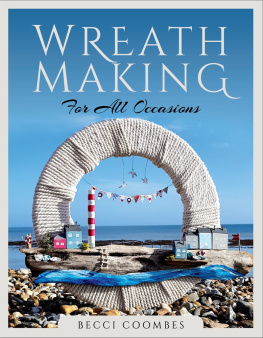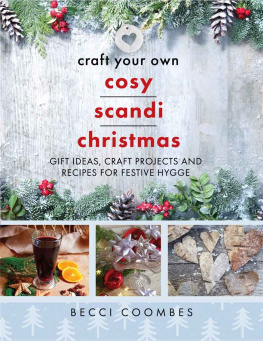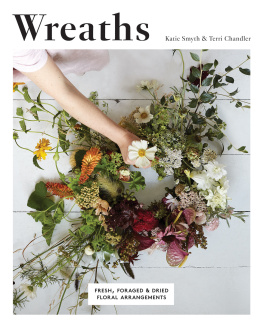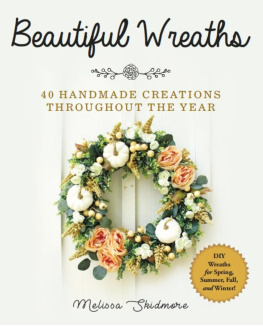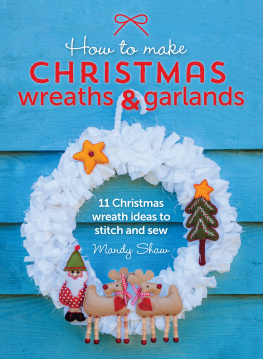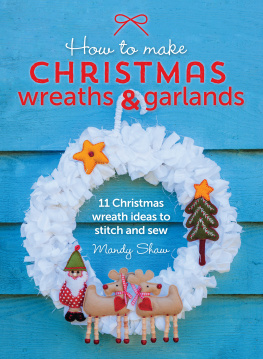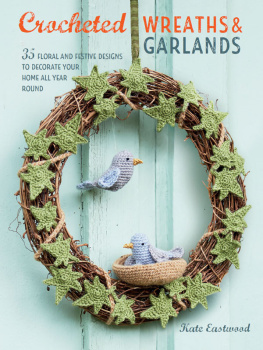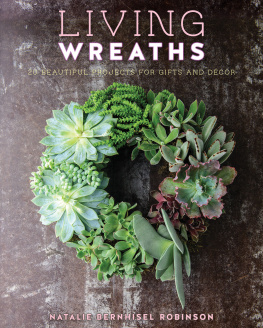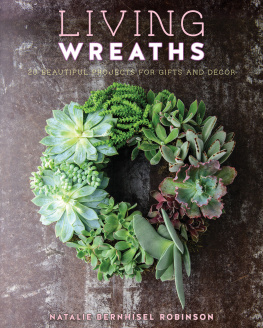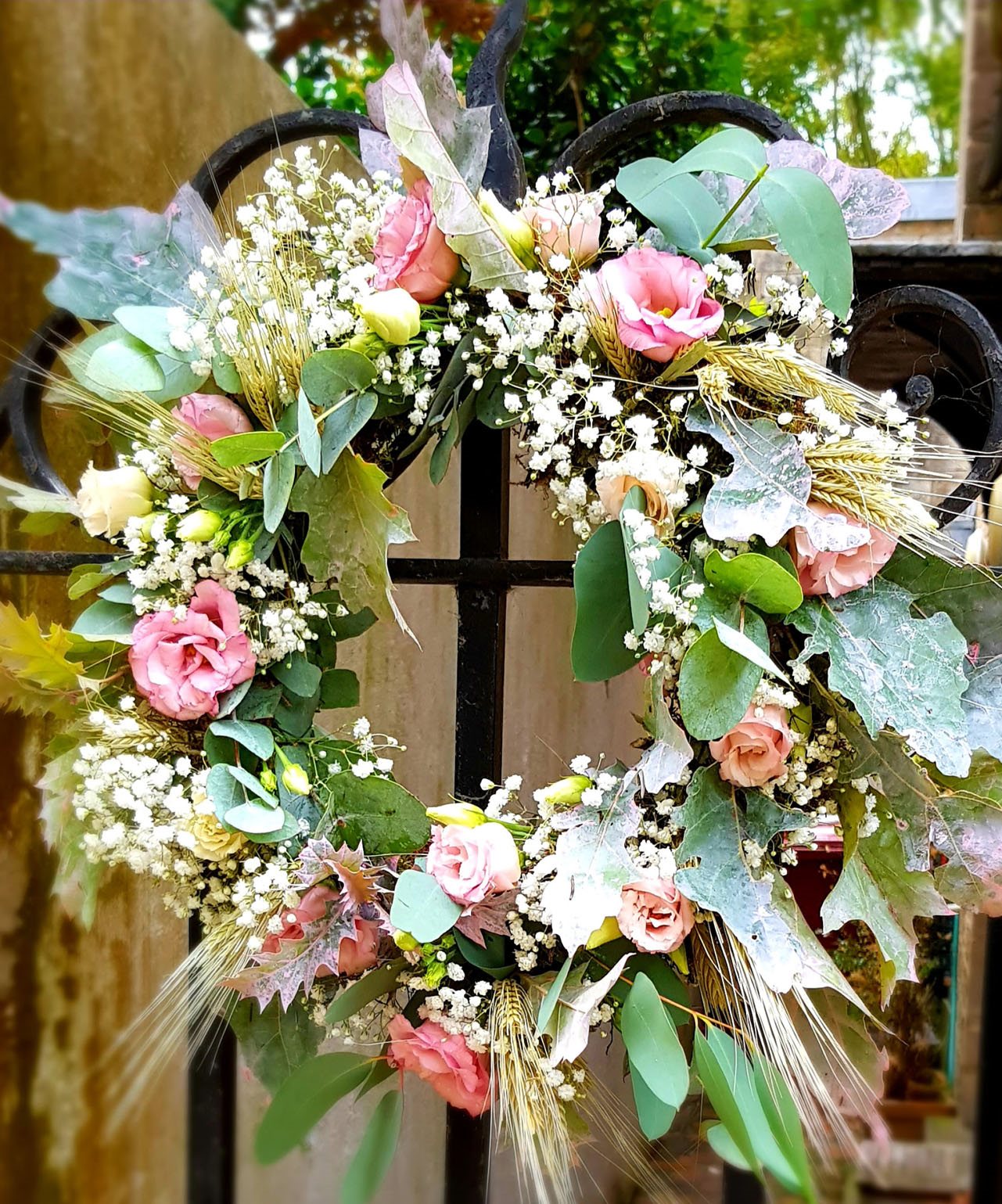Pagebreaks of the print version

WREATH
MAKING
For All Occasions
WREATH
MAKING
For All Occasions
BECCI COOMBES
First published in Great Britain in 2021 by
Pen & Sword WHITE OWL
An imprint of
Pen & Sword Books Ltd
Yorkshire Philadelphia
Copyright Becci Coombes 2021
ISBN 9781526776907
The right of Becci Coombes to be identified as Author of this work has been asserted by her in accordance with the Copyright, Designs and Patents Act 1988.
A CIP catalogue record for this book is available from the British Library.
All rights reserved. No part of this book may be reproduced or transmitted in any form or by any means, electronic or mechanical including photocopying, recording or by any information storage and retrieval system, without permission from the Publisher in writing.
Pen & Sword Books Limited incorporates the imprints of Atlas, Archaeology, Aviation, Discovery, Family History, Fiction, History, Maritime, Military, Military Classics, Politics, Select, Transport, True Crime, Air World, Frontline Publishing, Leo Cooper, Remember When, Seaforth Publishing, The Praetorian Press, Wharncliffe Local History, Wharncliffe Transport, Wharncliffe True Crime and White Owl.
For a complete list of Pen & Sword titles please contact:
PEN & SWORD BOOKS LIMITED
47 Church Street, Barnsley, South Yorkshire, S70 2AS, England
E-mail:
Website: www.pen-and-sword.co.uk
Or
PEN AND SWORD BOOKS
1950 Lawrence Rd, Havertown, PA 19083, USA
E-mail:
Website: www.penandswordbooks.com
ACKNOWLEDGEMENTS
AS ANY AUTHOR will tell you, a book is not just the fruition of their work, but the collaborative product of their family and friends. Whether it is the sustenance provided a couple of ginger biscuits left on your desk by your son, or a full and frank discussion on the best colour for pom-poms with your girlfriends, it all adds to the joy of writing.
A large portion of this book was written during lockdown, so many craft and floristry supplies (including flowers!) were difficult to obtain, if not impossible. My gratitude is due to all those who patiently listened to me brainstorm alternative solutions at length.
Special thanks are due to the Pom-Pom Squad, with whom I spent a glorious few days camping in a Sussex cow field, forcing them to tie themselves up in yarn: Lou, Angela, Dave W., Sarah, and Charlotte. Sarah also was generous enough to let me continually turn up at her door with wreaths to photograph and provided very welcome tea and assistance throughout. Elsie, Gabriella, the other Dave W., Cam, and James were the Cornwall Pom-Pom Squad and deserve thanks for a lovely week, and Philippa, Tim and Katy require a special and MASSIVE mention for keeping me inspired. Ads was kind enough to help me scavenge recycled materials from building sites, Stig provided metal coat-hangers and Dan B. helped above and beyond the call of duty by helping me cut the little wooden houses out of old bits of driftwood. Noah and Vince did nothing to help whatsoever, but as their auntie I am morally obliged to mention them in the interest of fairness.
Hazel at Castle Farm, Kent, Becky and Claire at The Flower Shop, Pulborough, and Mitch at Musgrove Willow were all so generous with their time and knowledge and I cannot thank them enough for their help. Thanks are also due to Sue and Phil for their beachcombing skills, Alex for lugging my bin-bag full of pine cones in a heavy drizzle and Tishie for her exceptional floristry skills and quiche. Dear Jane, the biggest love for getting me this gig in the first place. My mum was an absolute star, counting out literally thousands of lavender stems before they dried out, and Dan W. displayed inestimable love, support, and frankly astounding patience in listening to me witter on about the lack of adhesion on ribbon and how to make seagulls out of tin foil. Lastly, thanks to my son Wolf, cos I love you.
Sussex, 2020.
ABOUT THE AUTHOR
Becci spent her childhood holidays on the family farm in Denmark, and grew up with a love for all things Scandinavian. Originally she trained as an archaeologist before travelling the world and becoming a successful glass artist. She now runs www.hyggestyle.co.uk , an online boutique specialising in Danish and Scandinavian gifts, homewares, recipes and craft ideas. She also teaches bushcraft, foraging and survival to local schools and youth groups. She lives with her son, cat and chickens, and loves schnapps.
All photos by the author, with the exception of the large wedding willow heart (John Nicholls, jnphotography.co.uk ).
INTRODUCTION
HAVE YOU EVER wondered why we festoon our homes with swathes of greenery or hang wreaths on our front doors at Christmas? The word wreath actually comes from the Old English wrthan, meaning to make into coils, plait, fasten with a cord and its use to describe a ring or garland of flowers or vine was first recorded in the 1560s. However, archaeological and historical evidence shows the use of greenery and wreaths going back to at least classical times. Ancient Greeks presented laurel wreaths to winning athletes in the Olympics, symbolising victory and peace, and the Romans were also particularly fond of them, decorating temples, houses, chariots, priests and even emperors. The pagan midwinter festival of Yule was celebrated by bringing evergreens into the home to symbolise life during the long dark winter months, and the round shape of the wreath symbolised the continuing circle of life.
Wreaths and garlands are still a fabulous way to bring blooms and greenery into your home and utilise vertical space, or welcome friends and guests by decorating your garden gate. Once you have the knack of a few simple techniques, a quick potter round the garden or even a short walk on a winters day will yield enough materials for you to twist together a quick wreath to display on your door or dresser. With a little imagination, many designs can be made with bits and pieces found lying around the home, and can be tailored as lovely personalised gifts. Lego, wine corks and even sweeties are all easily glued on to a cardboard ring and those brightly coloured childrens clothes you are too sentimental to throw away can be snipped into sections with pinking shears and tied on to a wire base, rag-rug style.
Whatever your design, most wreaths are built on some sort of base, whether made of wire, willow or other materials and you dont need to be a trained florist to make the most beautiful creations to adorn your home. In this book we will explore many ways of designing wonderful decorations using a few basic techniques, and making the most of what nature has to offer, plus some made with easily found craft materials. The great thing about wreath-making as a hobby is that you dont actually need a huge amount of equipment, and most items can be found either in a drawer or in the greenhouse. If you dont have access to a nearby craft shop, it is quite easy to improvise an alternative.

